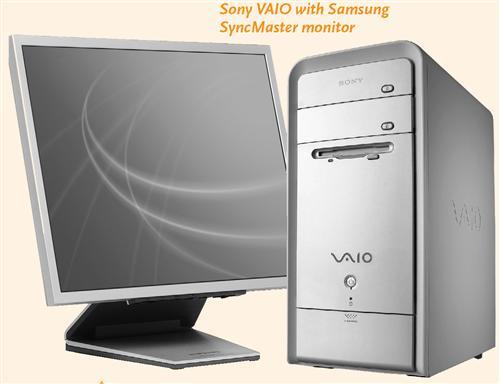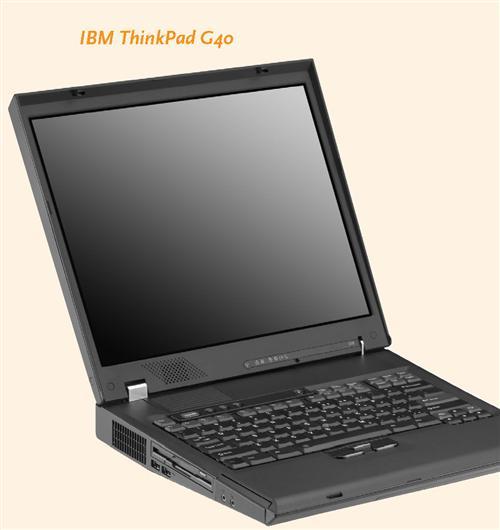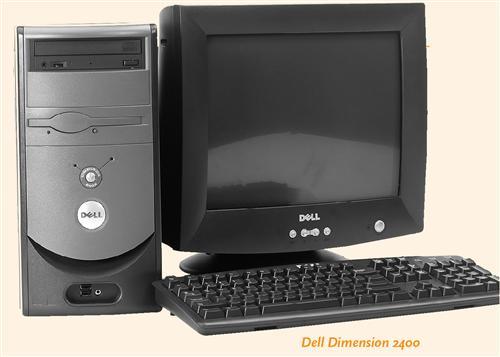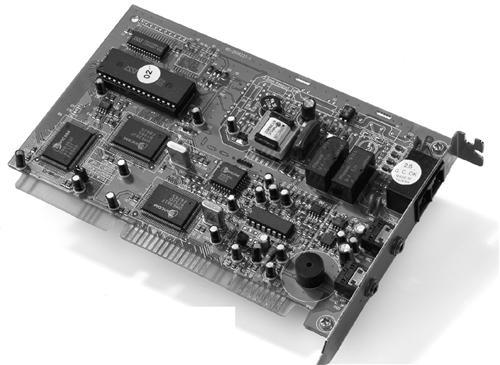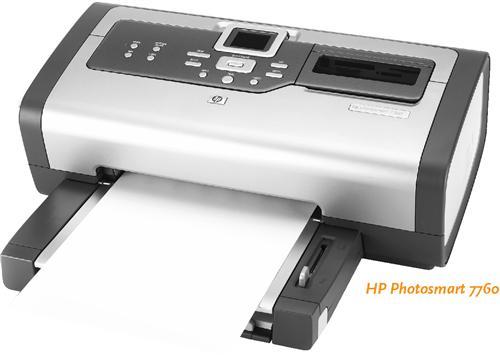Sign up for the Family Tree Newsletter Plus, you’ll receive our 10 Essential Genealogy Research Forms PDF as a special thank you!
Get Your Free Genealogy Forms
"*" indicates required fields
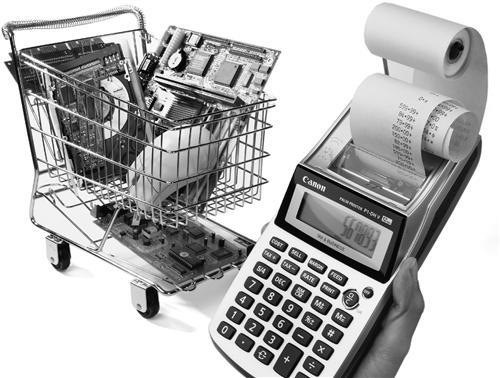
Is your computer’s hard drive filled to the limit with genealogy software, games, e-mail messages and scanned pictures? Are you tired of agonizingly slow Internet access? Is that dot-matrix printer of yours out of place in a photo-quality world? Maybe it’s time to upgrade your old computer or even replace it with a whole new system. Or perhaps you’re a holdout finally ready to get your first computer and join the plugged-in genealogy world.
Whether you’re upgrading an old computer or buying a new one, you need to make a few decisions. And your needs as a family history researcher may be different from those of the ordinary customer at your computer superstore. Here are a few key questions — and advice to help you answer them from the genealogist’s perspective.
Windows or Macintosh?
A computer’s operating system (OS) is the software that controls all the other programs on your computer and how they interact with your printer, scanner, CD-ROM drive and other devices. Most personal computers use one of two operating systems, either Macintosh OS or some version of Windows. Some software companies create both Windows and Mac versions of their programs, but most programs run on only one operating system or the other.
In almost every area, you’ll find far more software available for Windows computers than for Macs — and genealogy software is no exception. You can choose among 10 or so full-featured genealogy programs for Windows, but only a few for the Mac. (See page 36 for a comparison of these choices.) You’ll also find a lot of Windows CD-ROMs with census records, pedigrees and other roots resources, but only a few genealogy CDs that will run on a Mac.
Expect to pay more for a Mac than for a Windows computer with comparable hardware. Macs are more stylish and generally easier to set up and run, but usually less customizable and expandable than Windows computers. Both can connect you to the Net.
If genealogy is your primary reason for getting a computer, you’re probably better off buying a Windows machine. But if you already have a Mac, or you’ll use the computer for professional graphics work or other functions in which the Mac excels, rest assured that you can make good use of your computer for genealogy, too.
BUYING NEW: Most Windows computers $ for personal use come with Windows XP.
UPGRADING: Almost all Windows programs require Windows 95 or higher, so you. should upgrade (or get a whole new computer) if you have an older version. If you have Windows 95, 98 or Millennium Edition, consider upgrading to Windows XP, which makes it easier to manage your files and view digital images. This operating system also crashes less often than older versions. Windows XP requires at least a 300 MHz processor, 128 MB or more RAM, 1.5GB of free hard disk space and a CD-ROM or DVD-ROM drive. In practice, you’ll probably want a faster processor and at least 256MB RAM.
Desktop or laptop?
If you do most of your genealogy work from home, a desktop computer may suit your needs just fine. But if you spend much time researching in libraries and archives, a notebook computer (or “laptop”) makes a nice replacement for a bulky three-ring binder filled with charts and blank paper. You’ll be able to quickly access information on any individual in your genealogy files and type notes much faster than you could write them down with a pen and paper. And you can easily share the notes you’ve written on your computer with your e-mail correspondents.
Laptop computers usually will run off a battery for several hours, although most libraries provide electrical outlets to plug in your notebook. Call ahead to check on the library’s policies, and take along a lock so you can secure the laptop to a desk or table while you retrieve books. A laptop also makes it easy to access the Internet and send and receive e-mail while you travel — provided you have broadband access or you can get to a phone jack, and your Internet service provider has a local phone number for your location.
Although laptop computers are convenient for researching on the road, they do require a few tradeoffs. First, a laptop will cost about twice as much as a desktop computer with the same features. Second, a laptop’s keyboard is smaller and harder to type on. Finally, while desktop computers usually have lots of room for new components, laptops can’t readily be opened up, and have limited upgrade potential. So you’ll probably get fewer years of productive use out of a laptop before you’ll want to buy a new computer.
Laptop computers range from ultra-lightweight models weighing only 2 pounds or less to desktop replacements tipping the scales at 7 pounds or more. The most compact models easily will fit in your briefcase, but they have smaller screens and may lack internal CD-ROM, DVD and 3.5-inch disk drives. Larger notebooks are less convenient if you travel a lot, but bigger screens, keyboards and hard drives make them better substitutes for a desktop model.
A handheld computer (also called a personal digital assistant, or PDA — seepage 67) is an option for the traveler, but you’ll still want a desktop or notebook computer. Then you can enter data on your main computer using genealogy software, and copy that information to the handheld for reference on the road.
CURSORYDETAILS
Web Sites
Cyndi’s List — Software& Computers
<www.cyndislist.com /software.htm>
Free On-Line Dictionary of Computing
<foldoc.doc.ic.ac.uk/foldocg>
TechDictionary.com
Webopedia
Books
Complete Idiot’s Guide to PCs
8th edition, by Joe Kraynak
(Alpha Books, $19.95)
Computers Simplified,
5th edition, by Ruth Maran (John Wiley & Sons, $27.99)
The Genealogist’s Computer Companion by Rhonda McClure(Betterway Books, $18.99)
WHERE TO BUY
Apple Computer (800) 692-7753,
Best Buy
(888) 237-8289,
Buy.com
Circuit City
(800) 843-2489,
Dell (800) 999-3355, <www.dell.com>
Gateway (888) 888-2075,
Hewlett-Packard (888) 999-4747,
IBM (888) 746-7426,
Sony (877) 865-7669,
BUYING NEW: Get a desktop computer if you won’t be doing much research away from home. Go for a larger laptop with a big screen if you want one computer that will work well both at home and on the road.
UPGRADING: If you already have a desktop computer, consider getting an inexpensive, lightweight laptop for research trips and family reunions.
A CRT or LCD monitor for your desktop computer?
Space-hogging CRT (cathode-ray tube) monitors are rapidly being replaced by sleek LCD (liquid crystal display) monitors. Only about an inch thick, LCD monitors are light enough to move around easily, and they deliver crisper images than CRTs. A 15-inch LCD’s viewing area is about equivalent to a 17-inch CRT’s. But while LCD prices are falling, they still cost more than CRTs. Expect to pay about $250 for a 15-inch LCD and $380 for a 17-inch LCD, but only $140 for a 17-inch CRT and $180 for a 19-inch CRT.
BUYING NEW: Go with an LCD if you’re short on desk space and are willing to pay the premium. LCDs usually display sharper text, but if you edit a lot of color photos, a CRT might be a better choice. CRTs do a better job of displaying color gradations, especially dark colors and shades. LCDs also aren’t as bright as CRTs and they’re practically illegible unless you view them straight on. If you get a chance, compare monitors side by side in a store.
UPGRADING: Consider upgrading to a larger monitor to display more material on the screen at once and to relax your eyes. Replace a CRT with an LCD to reclaim desk space.
1.4 or 3.2 GHz?
The CPU, or microprocessor, is your computer’s brain, and generally determines how fast your programs will run. A Pentium processor running at 100MHz (megahertz) is the minimum you need to run most genealogy programs, but software manufacturers recommend at least 166MHz.
BUYING NEW: New computers now have CPUs with various flavors of Celeron, Pentium and Athlon processors ranging from 1.4 to 3.2GHz (1 gigahertz equals 1,000 MHz). A 1.4GHz CPU is more than sufficient for most programs, including genealogy, photo-editing, e-mail and word processing software. Consider a faster machine if you’ll be editing home videos or playing 3-D games.
UPGRADING: It’s possible to replace your computer’s CPU with a faster one, but not really economical now that whole computer systems are so inexpensive. If your computer has a 300MHz or slower processor, seriously consider getting a new computer.
128 MB or 1,024 MB of memory?
While running, computer programs require memory (RAM, short for Random Access Memory). If your computer has sufficient memory, you easily can run several programs — genealogy software, a word processor, an e-mail program — at the same time. Most genealogy software for Windows requires at least 16MB (megabytes) of memory, but 32MB or more is recommended.
BUYING NEW: Most new computers have $ 256MB or 512MB of memory. Go for 512MB or 1,024MB if you’ll be doing video editing.
UPGRADING: If your computer has less than 256MB of memory, consider adding more to improve performance. Make sure the speed and type of memory you add is compatible with what’s already installed.
20 GB or 250 GB of hard disk space?
Every program you install on your computer takes up space on your hard disk drive. Data files, such as word processing documents, e-mail messages, scanned photographs and data you’ve entered in your genealogy software, also take up space. Most genealogy programs need between 20 and 50MB of hard disk space, and you’ll probably want at least another 50MB free to hold your family information, not to mention more space for other program and data files. These days, hard drives are measured by the gigabyte (GB, or “gig” for short), which equals 1,000MB.
BUYING NEW: Hard drives in new desktop computers usually range in size from 40GB to 250GB, and those in laptops from 20GB to 80GB. It will take most users ages to fill up even 20GB of space, but opt for a larger drive if you save a lot of digital photos or edit videos.
UPGRADING: If your hard disk is almost full, you might copy some scanned pictures and old word processing documents to a CD-R disc (see below) to free up space. Otherwise, consider replacing your hard drive with a larger one or, if your computer has room, adding a second hard drive.
CD-RW or DVD-RW?
In addition to a 3.5-inch (1.44MB) floppy diskdrive, most computers have at least one of these high-capacity removable-disk drives:
CD-ROM: A CD-ROM (compact disc — read-only memory) holds up to 700MB of data. Before you can run a new program, you usually need to install it on your computer by copying files from a CD-ROM to your computer’s hard drive. A CD-ROM drive also can play music CDs.
CD-RW: A CD-RW (compact disc — rewritable) drive lets you create your own CD by writing data to either a CD-RW disc or CD-R (compact disc — recordable) disc. A CD-RW disc works like a large-capacity diskette: You can copy files to a disc, then erase them and record new data. Older CD-ROM drives can’t read CD-RW discs, so they’re not good for sharing files with friends.
You can use CD-R discs only once. Most regular CD-ROM drives can read CD-Rs so they’re ideal for sharing files such as scanned pictures or a large genealogy database with your correspondents. And they’re throwaway cheap.
Just in case disaster strikes, it’s a good idea to back up (create a copy of) the data files on your computer regularly. Floppy disks work fine for backing up a few small files, but CD-R discs are perfect for larger-volume backups.
DVD-ROM: This drive can read a DVD (digital video disc or digital versatile disc), which looks like a CD-ROM but can store 4.7GB — seven times as much as a CD.
DVD-RW: This rewritable drive lets you create your own DVDs. Like CD-RW discs, DVD-RW discs can be re-recorded up to 1,000 times. You can play back DVD-RW discs in all DVD drives and in some DVD video players.
SAMPLESYSTEMS
Here’s a sampling of complete computer systems, each including a printer and scanner. Particular brands and retailers are mentioned only as examples. Use these three sample systems as starting points to help you choose options that fit your needs and budget:
Sony VAIO with SamsungSync Master monitor
THE MULTIMEDIA GENEALOGIST
Sony VAIO, 3.0E GHz processor, 512MB RAM, 160GB hard drive, multi format DVD±RW/CD-RW drive, Giga Pocket personal video recorder and MPEG-2 encoder with TV tuner to record TV programs digitally and play them back on your computer, two i. LINK (IEEE 1394) interfaces and seven high-speed USB 2.0 ports for fast digital data transfer. Software includes Click to DVD for DVD creation, Picture Gear Studio for digital photos and Sonic Stage for digital music. $1,199.99
Add a Samsung Sync Master 17-inch TFT-LCD flat-panel monitor for $599.99, a Hewlett-PackardPhotosmart 7760 photo printer for $179.99 and an Epson Perfection 3170 flatbed photo scanner for $199.99.
Total system: $2,179.96
A fast processor and lots of memory and hard disk space make this system ideal for work with photos and video. You’ll be able to transfer video from a camcorder or VCR to your hard drive, edit the video and create a multimedia family history. And this system features a scanner that restores faded photos, slides and negatives, plus a printer that produces vivid photographs, sharp text and brilliantly colored graphics. Best Buy (888) 237-8289, <www.bestbuy.com>
THE MOBILE RESEARCHER
IBM Think Pad G40
IBM Think Pad G40, 2.6GHz processor, 256MB RAM, 30GB hard drive, CD-RW/ DVD-ROM combo, 14-inch display, 4 USB 2.0 ports. $1,187.99 Add a 4.2 pound Hewlett-Packard Deskjet Mobile Printer for $249.99 and a printer cable for $29.99 from Circuit City (800) 843-2489, <www.circuitcity.com> Order an HP Scan Jet 4600 see-through flatbed scanner for $129.99 from Best Buy. The scanner is less than an inch thick, but can handle bulky items such as books and magazines. Total system: $1,597.96
This 8.24-pound laptop packs a lot of power in a small package and should serve you well whether you’re researching from home or traveling to courthouses and libraries. IBM (888) 746-7426, <www.pc.ibm.com>
THE BUDGET FAMILY HISTORIAN
Dell Dimension 2400
Dell Dimension 2400, 2.80GHz processor, 256MB RAM, 80GB hard drive, CD-RW/ CD-ROM drive, 17-inch monitor. $557.
Add an Epson Stylus Photo RX500 printer/copier/scanner for $249, plus $24.95 for a cable. The unit can scan 35mm negatives and slides, and restore vibrant colors to faded photos. Total system: $830.95.
An excellent value, this setup will fill the needs of most genealogists. Dell (800) 999-3355, <www.dell.com>
DVD+RW: Another rewritable format, DVD+RW disks can be played back in all DVD drives and in most DVD video players. Many drives now support both DVD-RW and DVD+RW formats (look for DVD±RW drives). A few support yet another format, DVD-RAM, useful for regular data backup.
BUYING NEW: Since it can read regular $ CD-ROMs and create CDsa CD-RW drive is a better choice than a CD-ROM drive for most users. Recordable DVD (DVD-RW or DVD+RW) enables you to create your own DVD movies (see page 65).
UPGRADING: If you have just a CD-ROM drive, consider adding a CD-RW drive so you can back up large files and create your own CDs. If your computer can handle video editing, consider adding a DVD-RW or a DVD+RW drive.
Laser, ink-jet or photo printer?
The latest computer printers are faster, cheaper and produce better output than ever before, so if you’re using an old printer, it may be time for an upgrade. Most users choose one of these four printer types:
General-purpose ink-jet printers: If you want one printer to handle text for letters, color graphics for digital scrapbooks and photographs for sharing with relatives, an inexpensive ink-jet printer may be your best choice. Many ink-jet printers are practically giveaways, but ongoing expenses for ink cartridges and special paper quickly add up.
Multifunction printers: Most genealogists need a printer, but could also make good use of a scanner and a copier. Amazingly, you can now get all three functions in a single space-saving unit for as little as $100.
Photo printers: Whether you’re printing old family pictures that you’ve scanned or the latest snapshots taken with your digital camera, you want prints that rival or exceed the quality of professionally processed photos. Photo ink-jet printers fill the bill. Usually priced between $100 and $200, some even print directly from a digital camera — no computer needed.
Laser printers: Although monochrome laser printers can’t handle color, they produce sharper text, print faster and cost considerably less per page than ink-jet or photo printers. And prices have fallen: You can now find a unit with sharp output for just $100 or ultra-sharp output for $200. Color laser printers have dropped in price, too, but they don’t do as good a job on pictures as other models do.
BUYING NEW: Your choice of a laser or $ ink-jet printer will depend on how you expect to use it. A laser printer is ideal for quickly printing pedigree charts, family group sheets and Web pages, and costs less per page for toner and paper. But if you want to print color pictures, too, an ink-jet printer is a better choice — and it also does a better job on black-and-white pictures.
You might consider hooking up both a laser printer and an ink-jet, photo or multifunction printer to your computer. You also can find portable ink-jet models, which make ideal companions for a laptop computer when you’re on the road.
UPGRADING: If you have an old ink-jet printer, consider getting a new ink-jet, photo or multifunction printer to produce better pictures, and a laser printer for speedy text printing.
Flatbed, sheet fed or film scanner?
Whether you want to edit and share family pictures or turn a printed page into editable text, a scanner is an essential tool. You can choose among three kinds:
Flatbed scanners: Similar to photocopiers, flatbed scanners have a flat surface for scanning a picture, a sheet of paper or a page from a book or magazine.
Sheetfed scanners: These scanners quickly feed individual pages or photos and are usually more compact than flatbed scanners. Some flatbed scanners come with automatic document feeders.
Film scanners: Although some flatbed scanners come with film adapters, dedicated film scanners do a better job on 35mm negatives and slides. Some film scanners can handle 4×5- inch transparencies.
When selecting a scanner, consider these features (see page 58 for more advice):
Resolution: A scanner’s resolution is measured in dots per inch (dpi). A scan made at a higher resolution creates a more-detailed image. You need only 72 dpi for images that you’ll put on a Web site, 300 dpi for graphic images you’ll print and at least 600 dpi to produce high-quality photos. The higher the resolution, the more you can enlarge an image without sacrificing quality.
Bit depth: A scanner with a higher bit depth can recognize more color gradations and reproduce colors more faithfully. A 24 or 30-bit scanner works fine for everyday use, but a 36-bit scanner is better when you want the best reproductions of color photos.
Software: Scanners usually come bundled with not only scanning software, but also basic photo-editing and Optical Character Recognition (OCR) software for converting printed text to editable text. Sheetfed scanners often come with software for converting scanned documents to compact, easy-toe- mail PDF files.
Also consider the scanner’s speed, maximum document size (usually letter size for flatbed scanners) and connectivity (if your computer supports it, USB 2.0 is faster than a USB 1.1 or parallel connection). And be on the lookout for handy new features, such as dust-and-scratch removal and color correction — great for restoring old photos.
Expect to pay between $80 and $150 for a flatbed scanner, between $140 and $350 for a flatbed scanner with an automatic document feeder, $300 or more for a sheetfed scanner and $130 or more for a film scanner.
BUYING NEW: You’ll probably want a $ flatbed scanner for general use. Consider a film scanner if you’ll be scanning many slides or negatives. If your file cabinets are overflowing with genealogy notes and correspondence, a sheetfed scanner or a flatbed scanner with an automatic document feeder will let you convert those paper files into digital files so you can reclaim some office space.
UPGRADING: If your scanner doesn’t capture colors accurately or operates too slowly, consider getting a new one. Get a film scanner for the best scans from slides and negatives.
A sound card and video-capture card?
Most genealogy software lets you edit photos, create a slide show or put together an interactive scrapbook with photos, sound and video. To take advantage of all these features, your computer needs a sound card and a video-capture card.
Sound card: The sound card that comes standard with your computer will let you play music CDs and listen to audio associated with software, games and Web sites. Your genealogy software doesn’t need any additional hardware to create and play digital scrapbooks with sound.
You can even insert material from old audio tapes, such as interviews with relatives, in a scrapbook. First, you have to copy the audiotape to a hard disk. Just hook up your tape recorder to your computer with a stereo mini cable (available at electronics stores). Record the sound from the tape to your hard drive using Windows Media Player or free software such as Music Match Juke box <www.musicmatch.com> or Real Player <www.real.com/player>. Then use your genealogy software to link the sound file to a person or family.
Video-capture card: Before you can include a video in an electronic scrapbook, you have to transfer the video clip from a camcorder or VCR to your computer’s hard disk. You’ll need an analog video-capture card to capture video from a traditional camcorder or a VCR.
BUYING NEW: A sound card adequate for $ most uses is a standard component of any computer system. For better-quality sound, buy good speakers and a sub woofer. Get an analog video-capture card if you want to use video from a non-digital camcorder or VCR on your computer.
UPGRADING: Consider better speakers and a sub woofer for improved sound. If your computer has an open PCI slot, you can add a video-capture card for about $100.
Dial-up or broadband Web access?
Genealogy Web pages with just text and a few images will display reasonably quickly with a regular dial-up Internet connection. But with broadband (fast) Internet access, you can view even complex Web pages almost instantly, download software and GEDCOMs in seconds rather than hours, and quickly exchange scanned photographs with friends and relatives. A broadband connection (DSL, cable, wireless or satellite) transforms the Internet from the “World Wide Wait”to a dynamic experience in which you can even view videos without waiting for them to download first.
DSL or cable provides Internet access from three to 50 times faster than dial-up access with a 56K modem. Plus, a DSL or cable connection doesn’t tie up your phone line and is always on, so you don’t have to wait to connect.
Some rural areas still don’t have DSL, cable or wireless Internet service. Another option for high-speed Internet access is satellite, which you can get almost everywhere, but it’s more expensive.
HP Photosmart 7760
Dial-up: A 56Kbps (kilobits per second) V.90 modem comes standard on new computers. Expect to pay between $10 and $22 a month for a dial-up account.
DSL: You can install Digital Subscriber Line service on your existing phone line. Ask your telephone company if it offers DSL in your area. Monthly fees range from $20 to $80. Installation fees vary, but some companies offer it free or let you install it yourself.
Cable: Your cable TV company likely will charge between $40 and $50 a month for access, plus installation.
Wireless: Service is available in only a few areas, and prices range from $40 to $80 a month, plus installation.
Satellite: Hughes Network Systems <www.hughes.com/> and Star Band <www.starband.com> provide satellite Internet access even if you live in the boondocks. Equipment and installation cost between $600 and $700, and the monthly fee is $50 to $60.
BUYING NEW: Make sure there’s an Ethernet network card in your computer so $ you’ll be ready for DSL or cable Internet access, even if you don’t get it right away. A dial-up account is OK for moderate use, but consider DSL, cable or wireless if you plan to use the Internet often. If you can’t get DSL or cable in your area, consider satellite service.
Sometimes new computers include a year of free dial-up Internet access. That’s a good deal — at least if you don’t have to change your e-mail address. But think twice about a rebate offer that commits you to several years of slow dial-up service.
UPGRADING: For faster Internet access, switch from dial-up to broadband.
See contributing editor Rick Crume ‘s picks for the 40 top free databases on page 14.
ADVERTISEMENT

